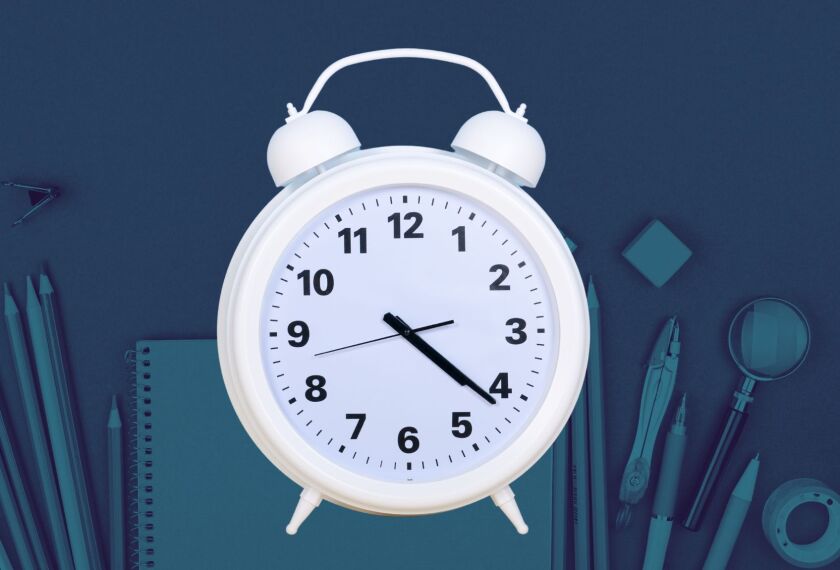Maximizing the amount of time students spend in class and focused on learning can have long-term benefits.
But that’s a tall order for teachers for reasons largely outside of their control.
During a typical school year, teachers contend with potentially thousands of interruptions to classroom time as students arrive late for class, administrators or other staff pop in for something seemingly quick, an announcement blares over the intercom, or the classroom phone rings.
With every interruption, the class veers off track not only for the length of the phone call, administrator visit, or intercom announcement, but also for the time it takes afterward to refocus the class on the learning at hand.
Those interruptions add up. For , researchers Matthew Kraft and Manuel Monti-Nussbaum surveyed students, teachers, and administrators in Providence, R.I., about classroom interruptions, and deployed observers to count the disruptions for themselves.
The number of interruptions varied by school—which the researchers said shows that minimizing interruptions is possible and the most cost-effective way to increase instructional time—but the typical classroom in Providence schools was interrupted 15 times per day and well more than 2,000 times over the course of a school year. (In a 2000 study, researchers observed no outside interruptions in Japanese classrooms while they observed them in 30 percent of 8th grade math lessons in the United States.)
Kraft and Monti-Nussbaum also kept track of the kinds of interruptions that were most frequent, how long they lasted, and how much time it took classes to refocus afterward.
Over the course of the school year, the researchers concluded that Providence high school students lost the equivalent of 10 days of instructional time to classroom interruptions. These totals reflect external disruptions but not fire drills or internal disruptions like student mishevaior.
They also found, generally, that student achievement was lower in schools with more interruptions. The researchers, in other words, didn’t find any high-achieving schools with high numbers of interruptions.
The animation above shows how such seemingly minor interruptions can add up over the course of a typical high school day, based on the researchers’ findings.
Education Week used approximately the average amount of time lost for each type of disruption—as detailed in Kraft and Monti-Nussbaum’s research—and added interruptions to match as closely as possible the frequency of each disruption to the frequencies represented in the study.
Below, we detail the type of disruption and the average amount of time lost, both due to the disruption itself and the time needed to refocus afterward:
Tardy student: A student arrives to class late. In Providence, teachers often had to stop the lesson to let these students in because the doors were locked. This is the most frequent type of interruption, representing 38 percent of external disruptions. Approximate time lost: 1.5 minutes.
Visiting staff member: An employee not assigned to the classroom visits to ask the teacher a question, share information, talk to a student, or simply say “hello.” These visits represented 17 percent of interruptions. Approximate time lost: 1.5 minutes.
Intercom announcement: Such announcements, made for a variety of purposes, represented 13.5 percent of interruptions. Approximate time lost: 1.5 minutes.
Call to the classroom phone: Such calls to teachers’ classroom phones—whether from the front office to ask if a student is in class or from another classroom to request an extra textbook—represented 12 percent of interruptions. Approximately time lost: 2 minutes.
Student returning from the bathroom or after being pulled out: A student returns to the classroom after going to the bathroom or being pulled out by another staff member for individualized instruction or another purpose. These returns accounted for 7 percent of interruptions. Approximate time lost: 1.5 minutes.
Visit by an outside student: A student not assigned to the class enters for any reason, including to share a message from another staff member, see a friend, or ask the teacher for help. These visits accounted for 9 percent of outside disruptions. Approximate time lost: 1 minute.
Laura Baker/Education Week via Canva.















